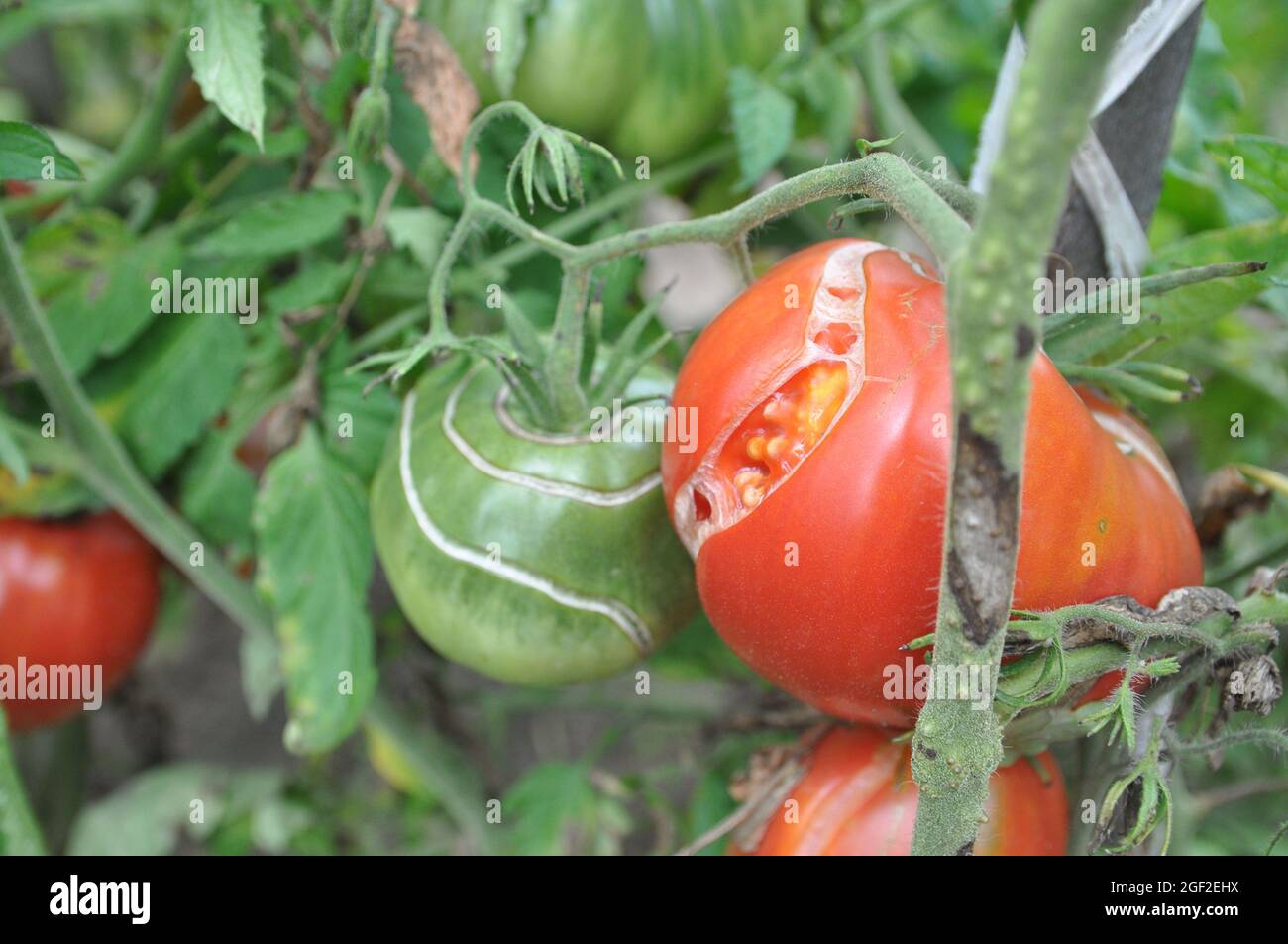It can be heartbreaking for gardeners when a tomato branch breaks off, especially if it has green tomatoes still developing. A common cause of broken branches is the weight of multiple fruits on one stem Wind or accidental damage while staking and pruning plants can also detach branches. While an unfortunate event, there are ways to salvage detached branches and ripen tomatoes. With a little care, gardeners can still enjoy the fruits of their labor.
Causes of Detached Tomato Branches
Several factors commonly lead to tomato branches splitting off:
- Excessive fruit load bending branches Tomatoes are heavy feeders and often set more fruit than branches can support
- Insufficient staking and caging failing to reinforce plants. Weak anchoring allows branches to droop and snap.
- Wind or storms applying force. Tomato plants are vulnerable to strong winds which can detach limbs.
- Accidental breakage while gardening. Vigorous pruning, staking and harvesting can crack branches.
- Diseases weakening stems and branches. Fungal issues like early blight create structural weakness.
Preventative care when growing tomatoes can reduce the chances of broken branches. However, even careful gardeners will occasionally have a loaded branch give way. The good news is detached branches can often still produce ripe tomatoes with a little TLC.
Salvaging Detached Tomato Branches
When a tomato branch breaks off with fruit, time is of the essence to maximize your chances of ripening the tomatoes. Here are some tips:
- Prune the broken end of the branch cleanly with sterilized shears. This prevents introduction of disease.
- Optionally dip pruned end in rooting hormone to encourage new root growth. However, tomatoes will ripen without roots.
- Place branch in a sunny location sheltered from wind and rain. A windowsill works well.
- Keep tomatoes hydrated. Misting detached branches daily provides needed moisture.
- Monitor ripening. Expect slower development compared to on the vine.
With ideal care, green tomatoes on broken branches should continue to ripen gradually. Expect flavor and texture differences from vine-ripened fruit.
Caring for Detached Tomato Branches
Proper care is required to ensure detached tomato branches can fully ripen their undeveloped fruit. Here are some care tips:
- Shield branches from temperature extremes. Ideal ripening temperature is around 70°F.
- Provide good air circulation to prevent rotting. A fan or open window works well.
- Inspect daily and remove any tomatoes or parts that begin to mold. Prevent spread.
- Consider loosely bagging clusters to increase humidity. Punch air holes for ventilation.
- Mist leaves and stems with water daily for hydration. Avoid soaking fruit directly.
- Ensure plenty of indirect sunlight for ripening. South or west-facing windowsills are ideal placement.
With attentive care, it’s possible to ripen detached green tomatoes nearly as well as if they were still attached to the parent plant.
Using Ripened Tomatoes From Detached Branches
With diligent hydration and care, detached tomato branches can produce ripe red fruit after several weeks. The tomatoes will be usable, but there are some differences to expect:
- Flavor is often milder without nutrients from the vine. Tomatoes may taste watery or flat.
- Texture changes without vine ripening. Tomatoes may be mealier or grainier inside.
- Shelf life decreases. Eat ripe window-sill tomatoes within a few days for best quality.
- Risk of spoilage increases. Inspect closely for mold or bacterial issues.
Given these limitations, the best uses for salvaged ripe tomatoes are cooking, canning, sauces and juicing rather than fresh eating. The additional heat processing helps concentrate flavors and improves texture.
While not ideal, ripening detached tomatoes is better than letting them go to waste. Some harvest is better than no harvest when branches break off unexpectedly. With TLC, gardeners can still reap a bounty.
Preventing Branches Breaking Off
While rescuing detached branches requires extra effort, prevention is easier. Here are some tips for avoiding broken tomato branches:
- Stake, trellis or cage plants to support heavy branches. Reinforce branching architecture.
- Prune plants regularly to thin fruit clusters. Remove smallest tomatoes from each cluster.
- Control watering carefully. Too much water leads to fast, weak growth prone to breaking.
- Monitor for disease and prune out affected branches early to limit structural damage.
- Shelter plants from wind, hail and storms to protect from weather pressures.
With proactive care when growing, gardeners can minimize heartache from broken tomato branches. But even careful growers will occasionally need rescue strategies for detached fruit-laden stems.
With some attentive TLC, gardeners can stay positive when tomato calamity strikes and branches break. By taking prompt action, developing fruit can gracefully recover to produce a harvest.
Saving the Broken TOMATO Branche::Easy Way to grow Broken Tomato plant::Harvest from rooting::
FAQ
What is eating my tomato branches?
Why do tomato fruit split?
- A Complete Guide to Caring for Yuki Cherry Blossom Shrub - January 23, 2025
- Identifying Red Hot Poker Seeds: What to Look For When Harvesting Torch Lily Pods - January 23, 2025
- A Complete Guide to Harvesting Evening Primrose Seeds - January 23, 2025

